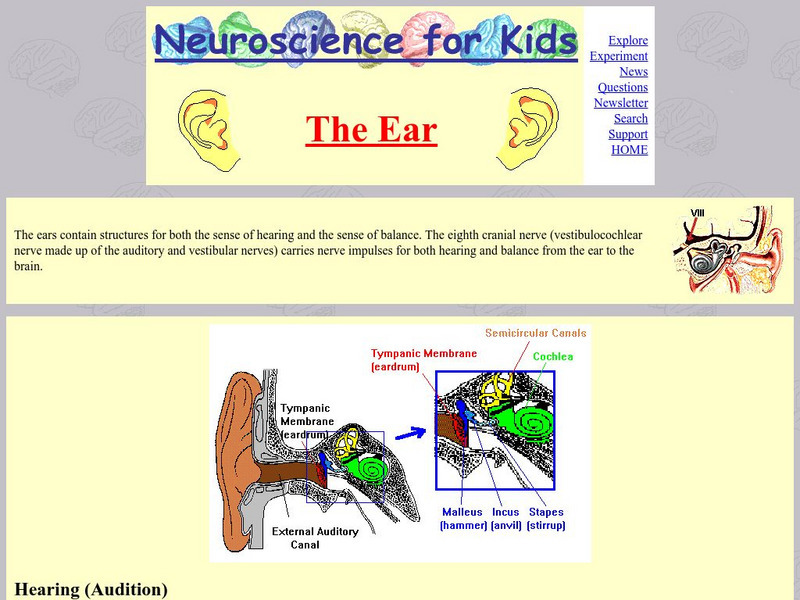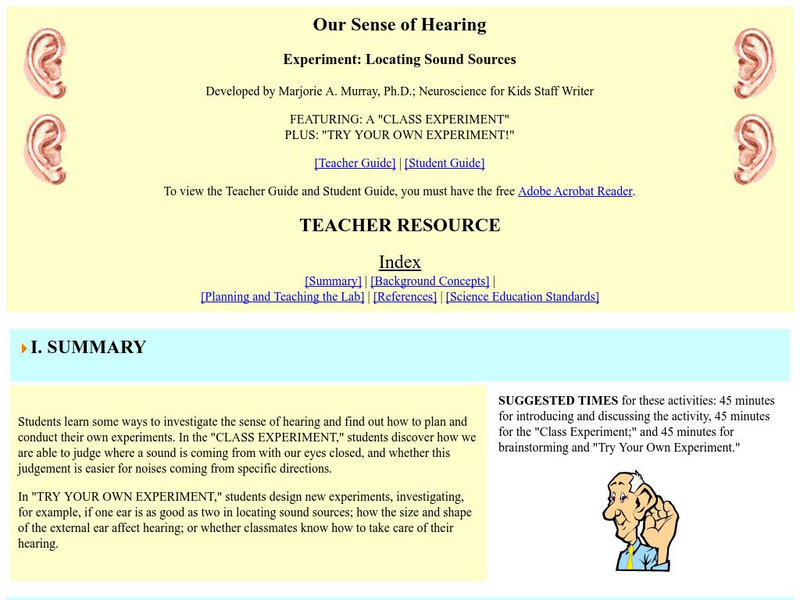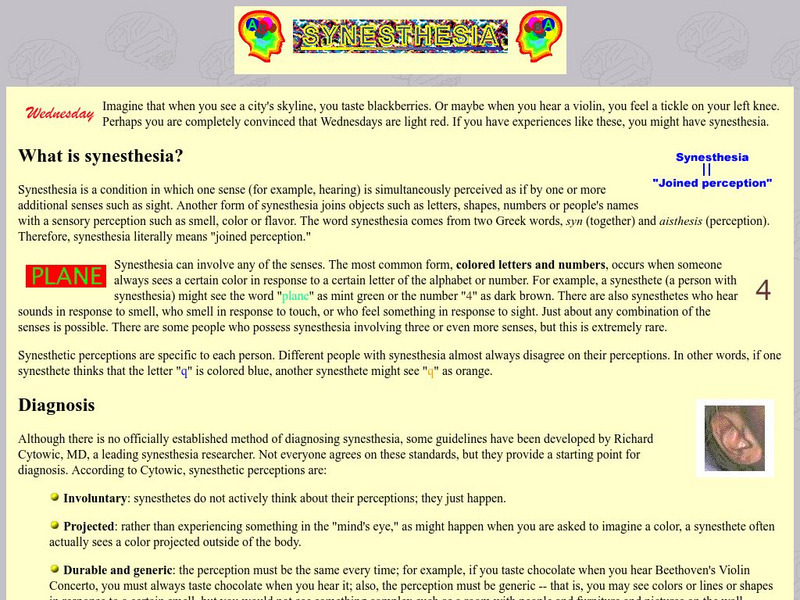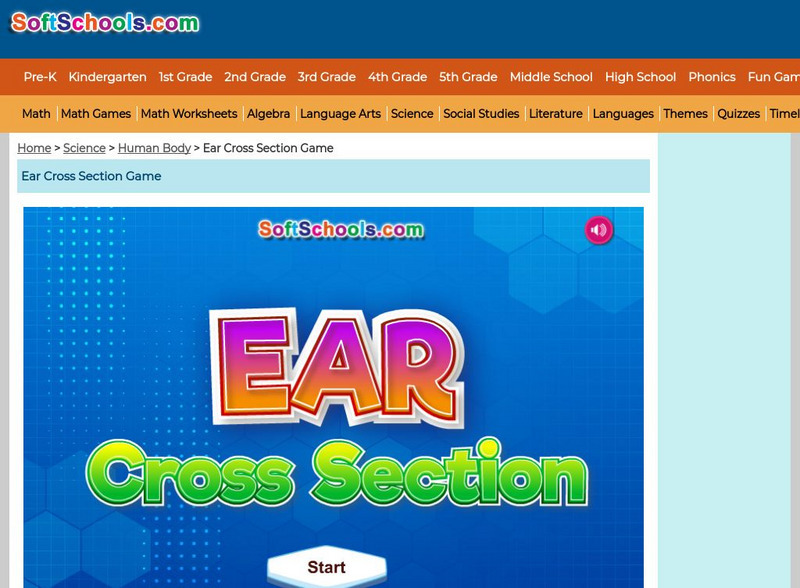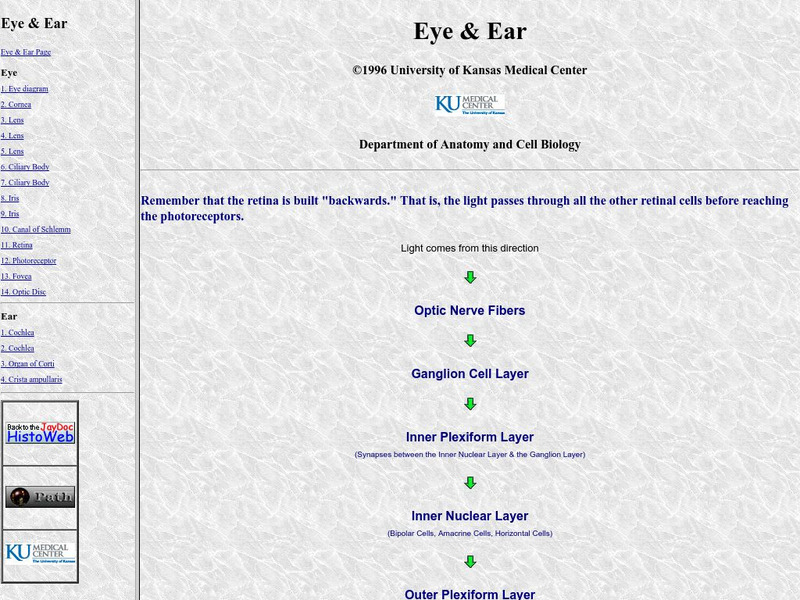Texas Education Agency
Texas Gateway: Physics of Hearing: Sound Intensity and Sound Level
By the end of this section, you will be able to define intensity, sound intensity, and sound pressure level and to calculate sound intensity levels in decibels (dB).
Texas Education Agency
Texas Gateway: Physics of Hearing: Speed of Sound, Frequency, and Wavelength
By the end of this section, you will be able to define pitch; describe the relationship between the speed of sound, its frequency, and its wavelength; describe the effects on the speed of sound as it travels through various media; and...
Texas Education Agency
Texas Gateway: Physics of Hearing: Problems and Exercises
This is a list of 84 problems and exercises to solve based on the content of Chapter 17: Physics of Hearing from the AP Physics online text.
Texas Education Agency
Texas Gateway: Physics of Hearing: Conceptual Questions
This is a list of 15 questions based on the major concepts presented in Chapter 17: Physics of Hearing from the AP Physics online text.
Texas Education Agency
Texas Gateway: Physics of Hearing: Hearing
By the end of this section, you will be able to define hearing, pitch, loudness, timbre, note, tone, phon, ultrasound, and infrasound; compare loudness to frequency and intensity of a sound; and identify structures of the inner ear and...
Other
Bscs: Content Background for Sound
This document will give you "extra" information and opportunities to build your understanding of sound so that you can be better prepared to facilitate the sound lessons with your students.
Other
Bscs: Sound Lesson 2: More Sound Makers: Do They Vibrate?
Do sound makers always vibrate? This lesson plan shows that all objects that produce sound vibrate, even if we cannot see or feel the vibrations. Included are a minute-by-minute lesson plan, activities, and teacher discussion points and...
Other
Bscs: Sound Lesson 1: Sound Makers
How can you tell if something is making a sound? This lesson will show that to produce sound, an object must vibrate. Included are a minute-by-minute lesson plan, activities, and teacher discussion points and questions.
University of Florida
Florida Museum of Natural History: My Body My Senses
This teacher's guide introduces children to the human body and the five senses and covers the major body parts and what they do. Children also will use their five senses to learn about the world.
Georgia State University
Georgia State University: Hyper Physics: The Place Theory
An indexing page for an elaborate and in-depth hyper-textbook on various physics topics. This page indexes several others which pertain to human ability to perceive sound and recognize pitch. Introduces and explains Place Theory.
Georgia State University
Georgia State University: Hyper Physics: Sound Level Measurement
Home page for a hypertext physics course. Users can access subjects ranging from the sound wave parameters that effect hearing and communication to OSHA worplace standards.
Georgia State University
Georgia State University: Hyper Physics: Sound and Hearing
Home page for a hypertext course on physics. Accesses a range of topics from hearing to sound measurement to sound propoation to musical instruments.
eSchool Today
E School Today: Your Revision Notes on the Five Senses
Learn how the sense organs are structured and how they function to provide you with five senses.
E-learning for Kids
E Learning for Kids: Science: Antarctica: How Are Sounds Useful to Us?
Paul is a researcher on Antarctica. The topic of his research is sounds. Identify which objects make sounds, and learn to recognize different sounds.
University of Washington
University of Washington: The Ear
The University of Washington offers a description of how the ear works, plus plenty of fascinating facts. Includes labeled diagram of the ear, sound clips of vocabulary words, and links to pages for further investigation.
University of Washington
The Senses
This site has a collection of learning activities, games, experiments, and lesson plans on the five senses. Organized by grade level and topic, this site is packed with an assortment of interactive and engaging activities, that would...
University of Washington
Hearing: Activities, Experiments, Models and More
Come and learn more about one of the five senses? Hearing is an integral part of our everyday life. To learn more use the activities, experiments, models and more wrapped into this hearing website.
University of Washington
Our Sense of Hearing Experiment: Locating Sound Sources
Have you ever wondered how your ear works? This website will provide you with knowledge on how to locate sound sources among other ear information.
University of Washington
University of Washington: Synesthesia
Have you ever seen something and associated it with a taste? If so, you many have Synesthesia. This condition is not widely publicized but may be present in as many as 1 out of every 200 individuals. Learn more about "joined perception"...
Soft Schools
Soft Schools: Ear Cross Section
An interactive labeling exercise on parts of the human ear.
The Franklin Institute
The Franklin Institute Online: Coming to Our Senses
Help students make "Sense," of their senses by using them in the classroom. Site provides discovery activities students can do on themselves, in their classrooms and around campus. A scavenger hunt is also provided.
University of Kansas Medical Center
University of Kansas Medical Center: Eye & Ear
Understand the structure and function of the eye and ear cells by examining these microscopic tissue samples.
Science Education Resource Center at Carleton College
Serc: Listening Challenge With Your Ears
In this activity, students will be able to use their sense of hearing to figure out which film containers sound the same and contain the same substance. They will then match their containers and self-check their answers.
Science Education Resource Center at Carleton College
Serc: Backyard Science the Five Senses
Kindergarten learners will use their existing outdoor expertise to help them focus on the scientific study of their five senses in stations.














